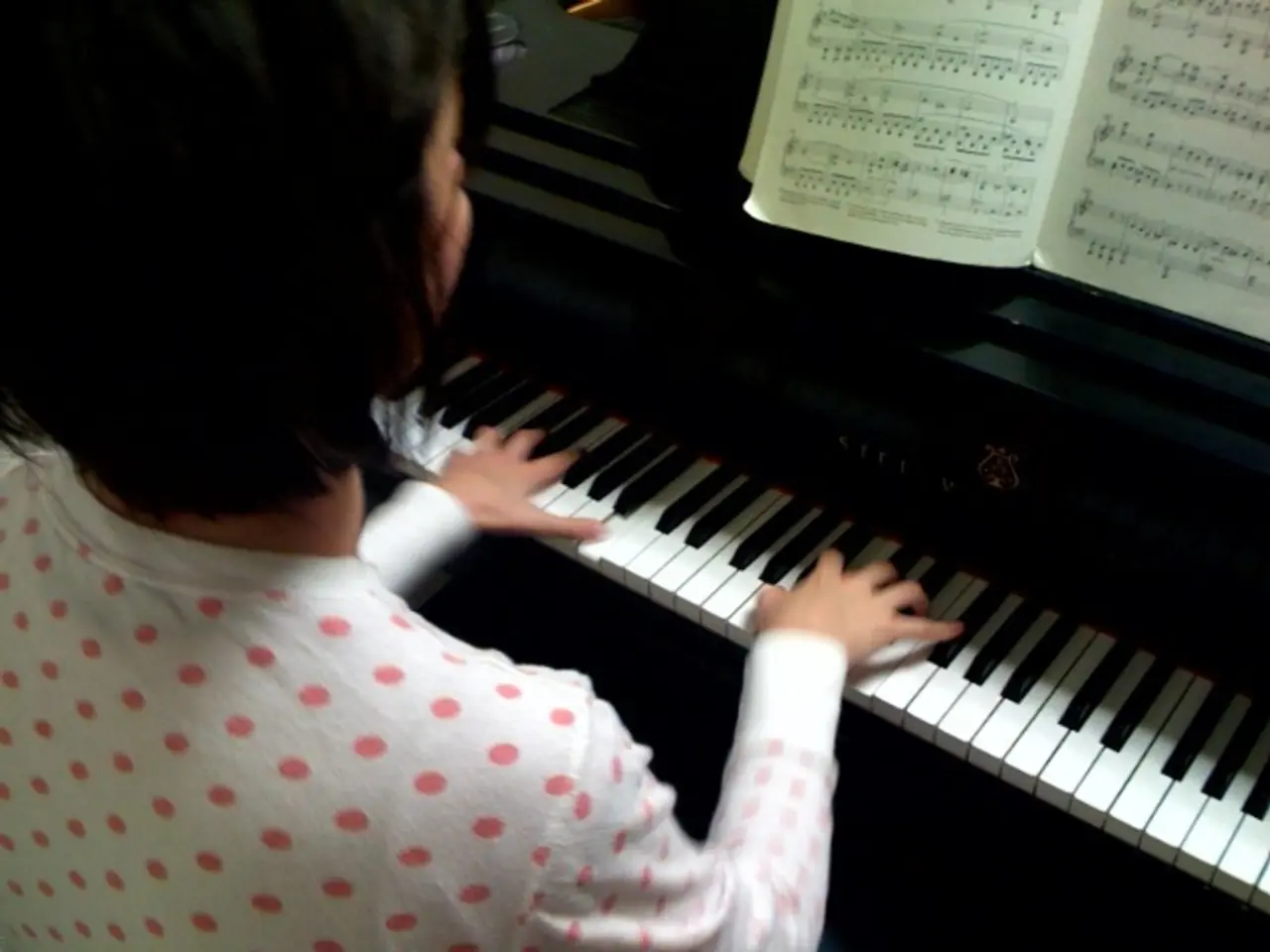Musical Tale Unfolds: Hector Berlioz's 'Fantastic Symphony'
==================================================
In the quaint town of La Côte-Saint-André, France, on December 11th, 1803, Hector Berlioz was born. Known for his innovative and audacious works in classical music, Berlioz remains a luminary, a timeless testament to the infinite realms that unfold when one dares to defy convention and embrace the extraordinary without reservation.
At the tender age of 12, Berlioz was introduced to music through a fluke encounter with an old guitar. This serendipitous meeting sparked a lifelong passion for sound and composition that would soon set the classical music world ablaze.
Berlioz's contributions to classical music are manifold. He was a pioneer in the development of programmatic music, a genre that sought to convey narrative or descriptive content within a musical composition. His groundbreaking work, the "Symphonie Fantastique," delves deep into the intricacies of human emotion and underscores the boundless potential of art to narrate stories that elude the limitations of mere words.
The "Symphonie Fantastique" is a symphony that charts the course of an artist's obsession with his beloved. The actress who inspired this masterpiece was Harriet Smithson. The symphony's four movements offer a vivid portrayal of the artist's love, despair, and eventual madness, culminating in a depiction of his execution.
The first movement, "Reveries, Passions," captures the initial euphoria of love. The second movement, "A Ball," depicts a festive gathering, complete with the sound of a waltz. The third movement, "Scene in the Country," evokes a peaceful, pastoral scene, only to be disrupted by the sound of hunting horns, symbolising the artist's increasing anxiety.
The fourth and final movement, "Marche au Supplice" (March to the Scaffold), begins with the artist hallucinating that he has killed his beloved and is being marched to the scaffold. Berlioz employs a full orchestra to convey a sense of impending doom and an unsettling atmosphere. The tuba and other brass instruments, used in the 'Dies Irae' section of the movement, add a haunting and majestic quality to the music.
One of Berlioz's most notable innovations was his pursuit of innovative orchestration. He was instrumental in expanding the traditional orchestra, introducing unconventional instruments and emphasising their individual roles within the ensemble. His use of the English horn, heard in a duet with the oboe, representing two shepherds in the distance, is particularly noteworthy.
Berlioz was also a pioneer in the use of unusual instruments in orchestral music. His visionary approach led to the inclusion of instruments such as the English horn, the ophicleide, and the cornet, which were largely uncharted territory at the time.
In the "Songe d'une nuit de sabbat" movement of the "Symphonie Fantastique," Berlioz uses the oboes, clarinets, and bassoons to create eerie, trilling sounds reminiscent of unearthly creatures. The movement takes inspiration from the medieval chant 'Dies Irae,' a hymn associated with judgment and the end of the world. The "ideé fixe" is played yet again in this movement, this time with a stark contrast to its previous renditions, as a wicked and grotesque perversion of the artist's beloved.
Berlioz's life was marked by a zealous artistic ambition and relentless pursuit of originality. These qualities made him a significant figure in the 19th century's classical music scene, earning him the moniker "romantic radical." His Treatise on Instrumentation, published in 1844, remains an invaluable resource for composers, providing detailed insights into the art of orchestration.
Today, Berlioz's works continue to captivate audiences and inspire composers worldwide. His daring exploration of instrumental timbres, innovative orchestration, and keen eye for the expressive potential of each instrument have left an indelible mark on the world of classical music. As we continue to appreciate his groundbreaking compositions, we are reminded of the boundless potential of art to push boundaries and defy convention.
Read also:
- Today's most impactful photographic moments
- Support for Eric Adams in The Post's Letters to the Editor on August 13, 2025
- Roosting Shark and Rambunctious Red Squirrels: Unconventional House Rental in Yorkshire Involving Aquatic Marvel, Squirrely Mayhem, and Mystical Planning Regulations
- Legal Dispute Dismissed with Humor: Supreme Court Laughs off Another Civil Matter Mislabeled as Criminal Prosecution








